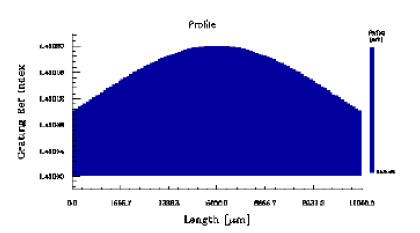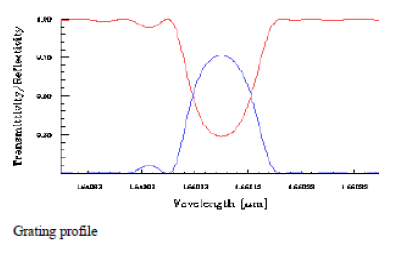Reference
T. Erdogan, ‘Fiber Grating Spectra,’ J. Lightwave Technol., vol.15, No.8, (1997),
pp.1277-1294.
Description
The example demonstrates the effect of apodization on the optical properties of a
fiber grating. A chirpless, sinusoidal Bragg grating has a user-defined average refractive index and apodization.
The average index is modulated by the Gaussian function:
Index_Mod*exp(-ln2*(2*(x-Length/2)/Length)^2)
The fiber Bragg grating is apodized by the Gaussian function:
exp(-ln2*(2*(x-Length/2)/Length)^2)
where the variable x is the propagation distance along the fiber.
The main results are the reflection and group delay spectra. Both spectra show a
considerable suppression of sidelobes.
Peaks at the shorter wavelength are caused by the non-uniform DC average index
change.



